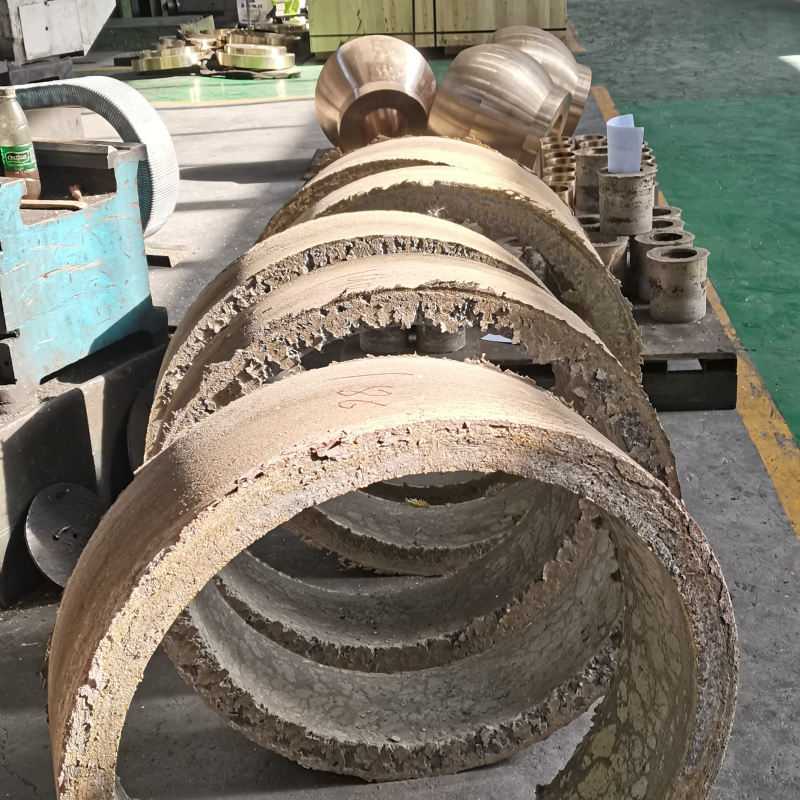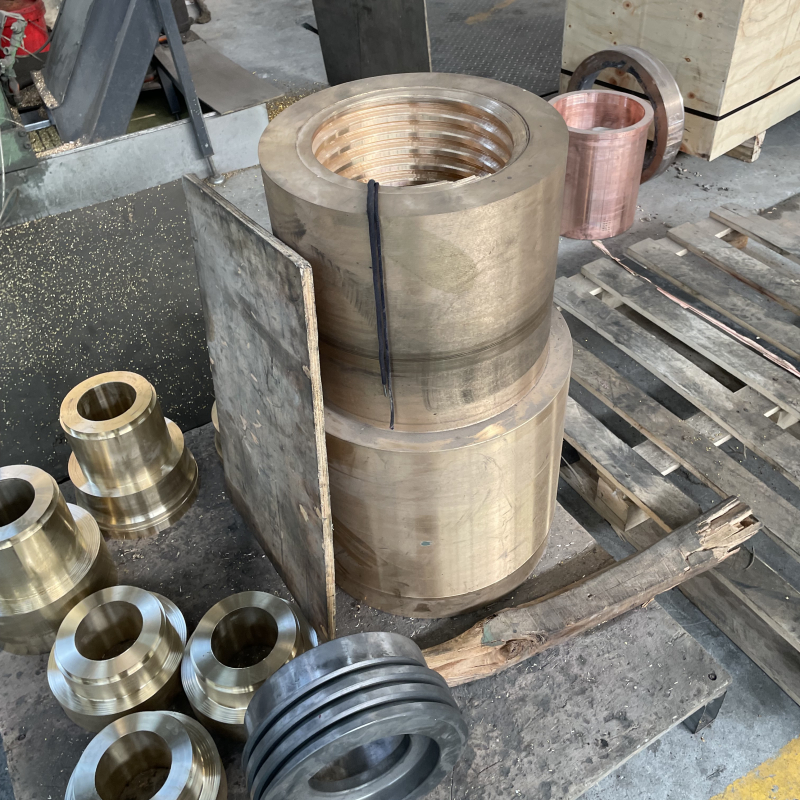 Mazhuang Village, Yuhe Town, Huixian City, Xinxiang City, Henan Province, China
Mazhuang Village, Yuhe Town, Huixian City, Xinxiang City, Henan Province, China
 Service Hotline +86 17630258963
Service Hotline +86 17630258963  Cell phone +86 17630258963
Cell phone +86 17630258963 Defects in copper bushing can be classified according to the manufacturing process, the use of the environment and the characteristics of the material itself. The common defects are as follows:
Casting defects
Pneumatic holes: holes formed during the casting process of copper bushing due to gas not completely discharged, affecting the mechanical strength and density.
Shrinkage holes: holes or depressions caused by volume contraction of copper liquid during cooling, affecting the uniformity and strength of the copper bushing.
Slagging: impurities in the casting process are not cleaned up in time, resulting in the inclusion of foreign matter in the copper bushing, affecting its wear resistance and service life.
Sequencing: copper liquid in the solidification process, the composition of the uneven distribution, resulting in some parts of the copper bushing hardness or wear resistance is insufficient.

Processing defects
Dimensional deviation: copper bushing in the processing process, if the processing equipment is not calibrated properly or the process control is not strict, may lead to the size does not meet the design requirements, affecting the installation and use.
Surface roughness is too high: improper processing or tool wear, resulting in excessive surface roughness of the copper bushing, affecting the fit accuracy and friction performance.
Coaxiality error: inaccurate machining may lead to the internal and external surfaces of the copper bushing are not concentric enough, affecting its performance in the bearing system.
Use defects
Excessive wear: Due to improper material or lubrication, the copper bushing may wear too fast under high friction environment, resulting in shorter service life.
Corrosion: when used in wet or corrosive environments, the copper bushing may be oxidised or corroded, affecting its mechanical properties.
Fatigue Cracks: When subjected to high loads or frequent stress changes for a long period of time, the copper bushing may experience fatigue cracks or fracture.

Material Defects
Uneven material composition: If the alloy ratio is not properly controlled or the material quality is low, the mechanical properties and wear resistance of the copper bushing may be unstable.
Uneven hardness: Uneven hardness may exist within the material, leading to premature wear or damage in localised areas.
The presence of these defects not only affects the service life of the copper bushing, but may also have a negative impact on the overall mechanical equipment performance. Therefore, these defects should be avoided as much as possible during production and use.
